How To Photograph A Supermoon With The NYC Skyline (Updated 2025)
October 21, 2023
Last Updated on December 23, 2025 by Erin Donahue
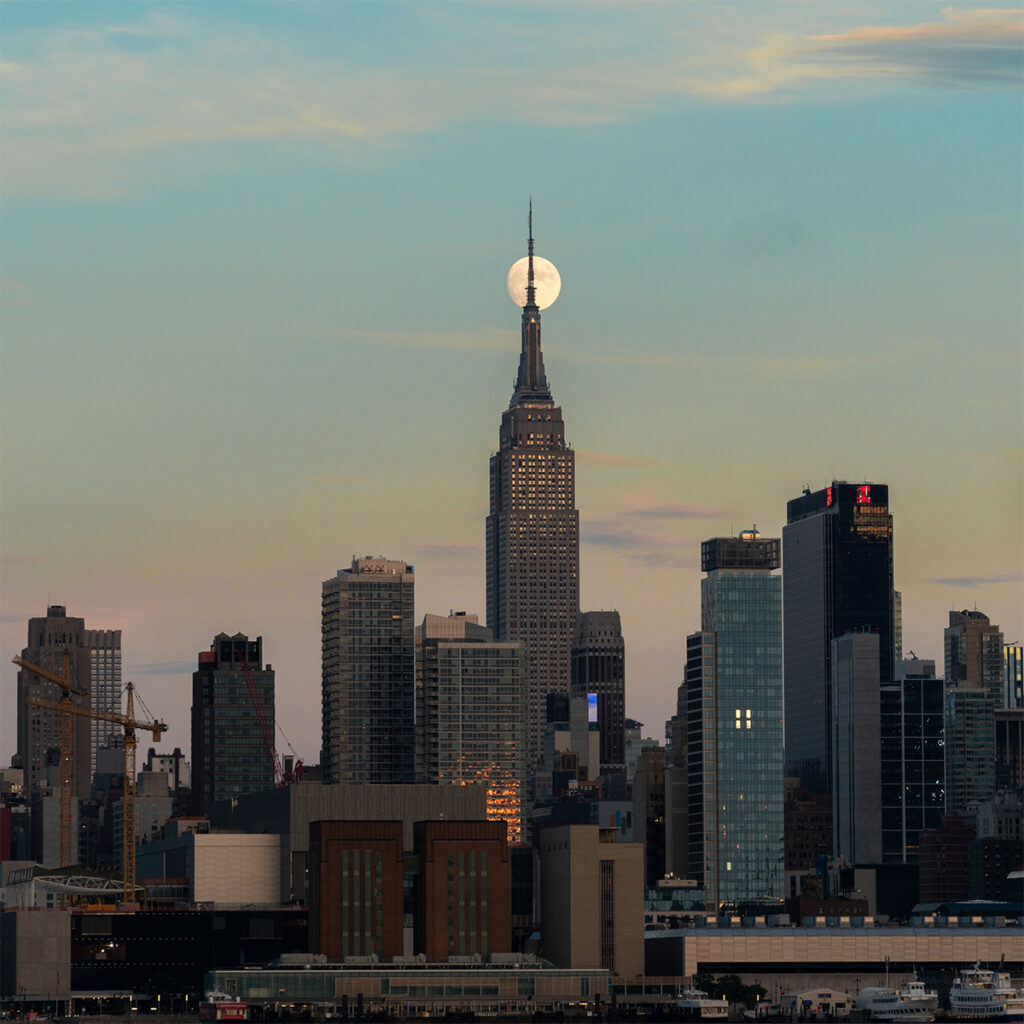
New York City is not only famous for its iconic skyline but also for its mesmerizing moonrises. Capturing the moon with the NYC skyline, or any urban skyline at that, is a must-capture. In this guide, let’s explore the best photography locations, equipment, and techniques to help you capture stunning moonrise moments.
Disclosure: Some links may be affiliate links. This means that I may earn a small commission if you decide to buy (at no additional cost to you).
What is a Supermoon?
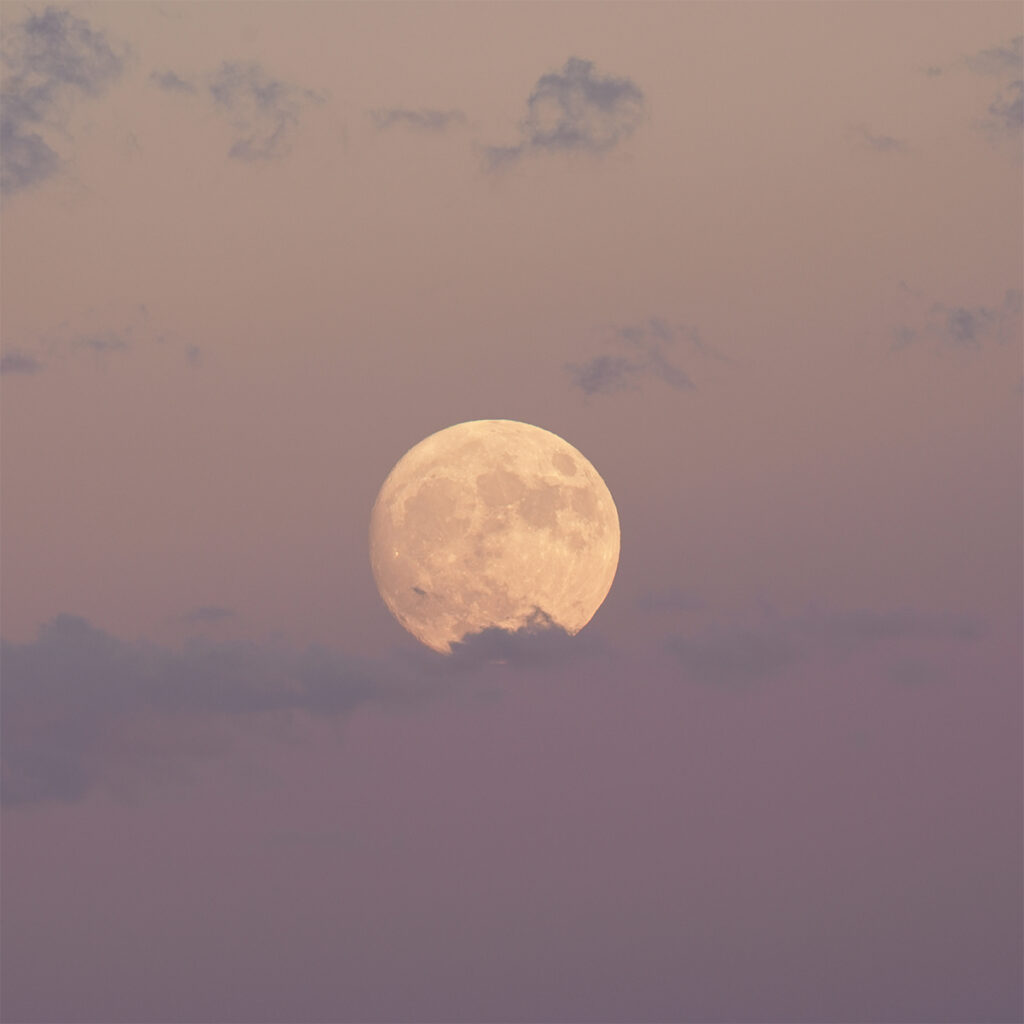
According to NASA, a supermoon occurs when the moon is at its closest point to Earth during a full moon phase. In layman’s terms, this phenomenon makes the moon appear larger and brighter in the night sky. To capture this celestial beauty with the New York City skyline, planning and timing are essential, especially if the composition is aligned with a famous skyscraper.
Best Time Of Year for Moonrise Photography
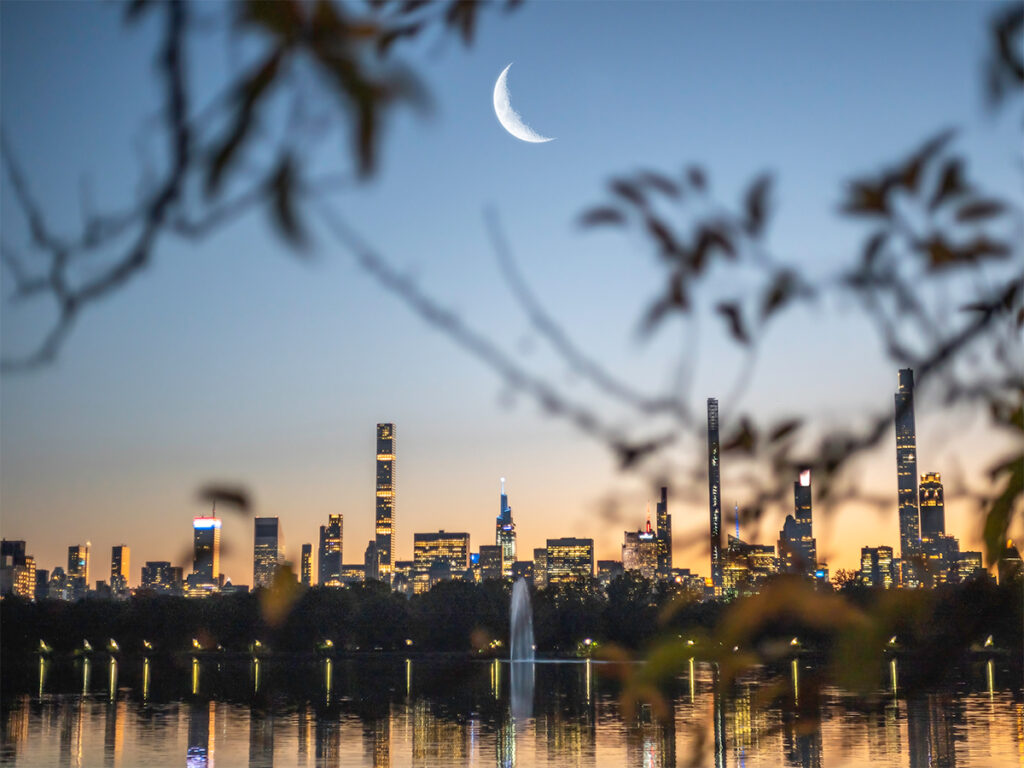
This is your preference, but for the best moonrise photography experience, planning a shoot during the warm summer months is better. During this season, you can capture the moon against a colorful backdrop of the sunset since moonrise happens right after the sun goes down. Depending on the plans, you can get the moonrise set against a colorful sky! This is usually doable the night before the actual full moon.
For precise and well-composed shots, consider using planning apps like PhotoPills or PlanIt Pro. These apps help map out the perfect composition, aligning the moon with a desired building in the skyline by having functions like the Virtual Reality Viewfinder. While they may seem technical at first, practice will help you master these tools and enhance your astrophotography skills.
The Ideal Moonrise Location
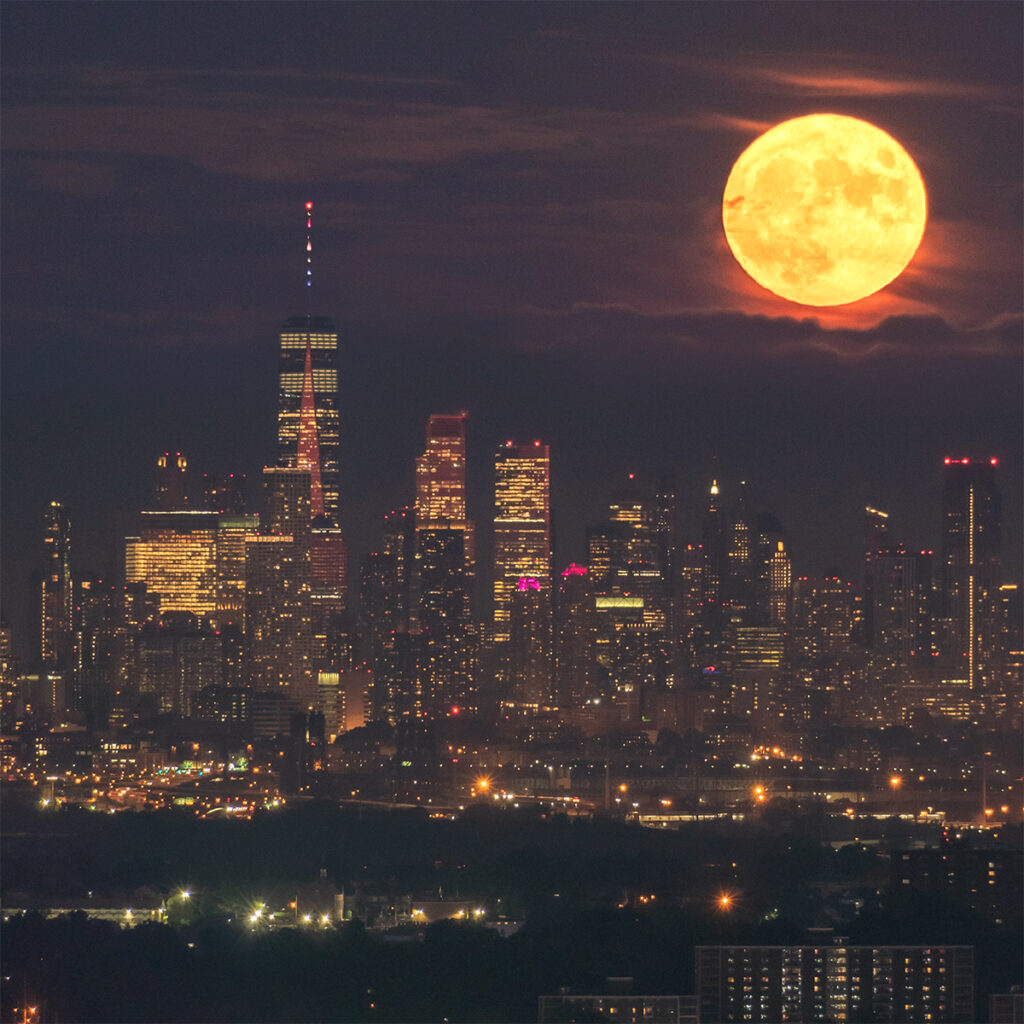
To get that perfect shot of the moon with the NYC skyline, it’s best to head across the Hudson River to New Jersey along the waterfront. The New Jersey side offers fantastic vantage points, including Weehawken and Liberty State Park. Travel options include driving, taking a bus from Port Authority, or my personal favorite, the NY Waterway ferry. The ferry ride is not only convenient but also often allows you to enjoy a beautiful sunset while crossing the river.
New Jersey moonrise photo spots
To capture a massive moon that visually looks bigger than the skyline, consider visiting Eagle Rock Reservation in West Orange. Compression is a photography technique in which the background appears to be closer to a subject and larger in comparison than it actually is. This effect is achieved with telephoto lenses and physically standing as far away as possible. Keep in mind that going to Eagle Rock Reservation requires a car, and optimal weather conditions are crucial for a distortion-free shot. It’s a journey that may not always yield the desired results because of how easily the air in between gets muddled.
New York City moonrise photo spots
If traveling to New Jersey isn’t an option, you can still capture stunning moonrise shots from the NYC side, particularly from Queens or Brooklyn. However, be prepared to wait until later in the night for the moon to rise fully. Personally, I’ve shot from Gantry Plaza State Park plenty of times.
Camera Gear
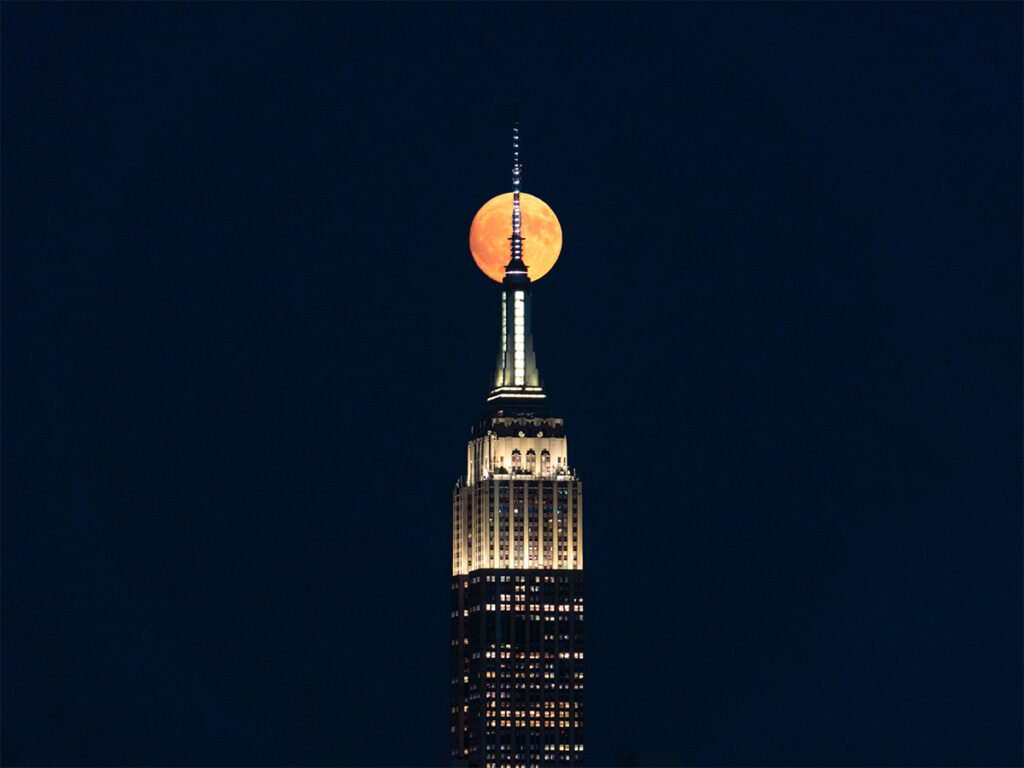
Telephoto Lens
To capture the moon and NYC skyline effectively, a telephoto lens with a minimum focal length of 200mm is needed. One of my go-to lenses is the Sony 70-350mm F4.5-6.3 G OSS lens, which is an APS-C lens. With its 35mm equivalent, it is 525mm when fully zoomed. That being said, many of my shots are also captured with the 18-200mm F3.5-6.3 OSS lens. Originally launched back in 2010 for NEX cameras, this was one of my main travel cameras for the longest time because of its wide range, and before I started upgrading to full-frame. With its 35mm equivalent, it can go from 27mm to 300mm!
When I was at my first Sony Kando Trip, I got to test out the $13,000 600mm f4 GM, but since it’s a prime lens, there’s no ability to incorporate any foreground. I prefer the Sony FE 200-600mm F5.6-6.3 G OSS telephoto lens and keep the zoom around 500mm.
Tripod
Using a tripod is advisable, as moonrise photography often takes place at night and the moon is surprisingly fast during moonrise. A tripod ensures stability and allows you to set up time-lapse shots to capture the moon’s movement across the sky.
Moonrise Camera Settings
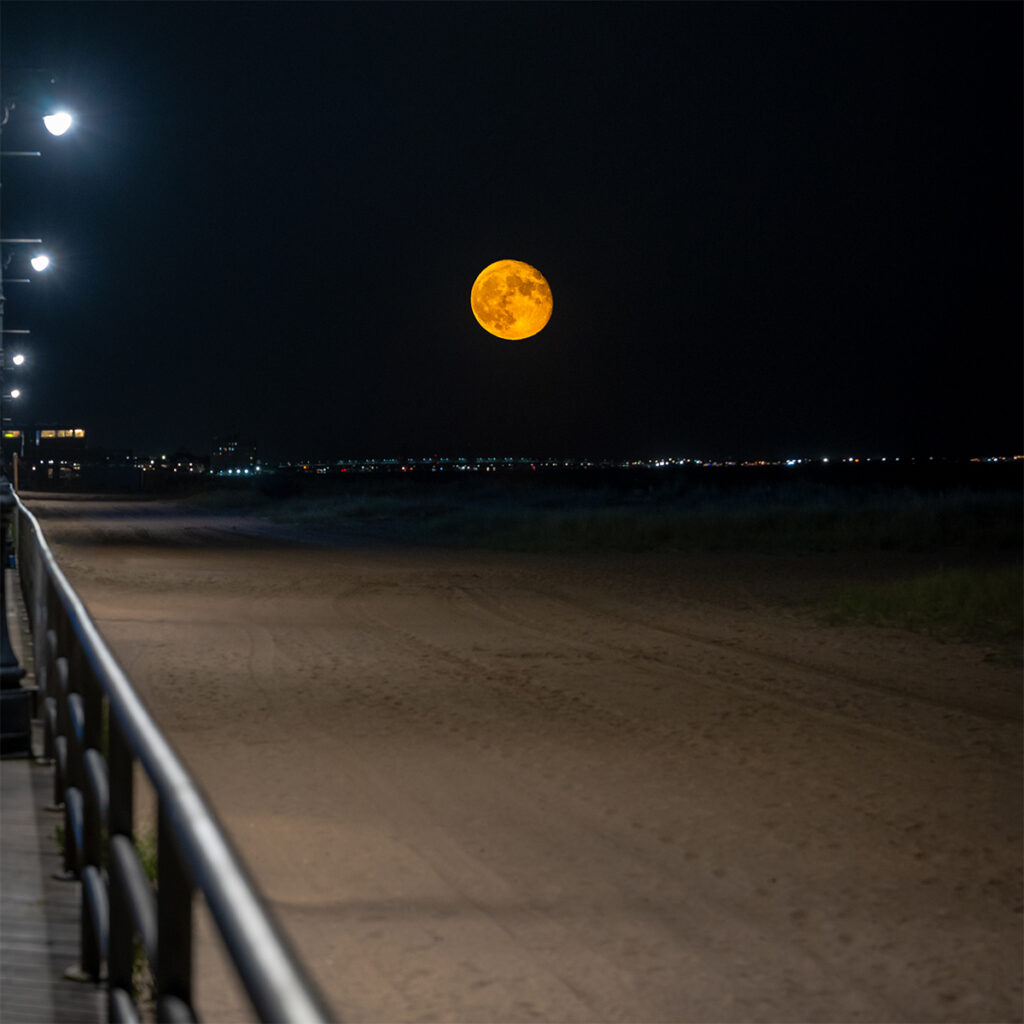
Depending on the hour, photographing the moon veers into long exposure photography territory. For settings, the first thing to do is switch over to manual focus. As the light dims, the camera might have a hard time focusing while in auto. Save time by setting up the focus manually.
Aperture
The aperture should preferably be as close to f/8 as possible, but going down to f/5.6 is completely fine. Ideally, keeping the aperture small will allow a relatively wide depth of field to keep most of the cityscape shot in focus.
Shutterspeed
Shutter speed is the variable to experiment with in this scenario. I typically stay around 1/200 in many photography situations, but have done 1/100 and even as low as 1/20 without motion blur. This is why giving someone exact camera settings doesn’t matter since the available light is always different!
ISO
While it’s preferred to stay close to 100, I’ve been pushing ISO higher because I really need the light. On my most recent shoot of the supermoon with the NYC skyline, I went up to 1000. Sony is known for its low-light capabilities, and at 1000, there wasn’t that much noticeable noise!
All in all, photographing a supermoon or regular full moon is more about practice. Prepare properly and it becomes easy to get rewarded with some beautiful shots, especially with the NYC skyline. Whether shooting from the New Jersey waterfront or NYC boroughs, the key is practice and patience. With the right gear, techniques, and camera settings, you can photograph a supermoon with the NYC skyline. Happy snapping!
Watch How To Photograph A Supermoon With The NYC Skyline on YouTube
Leave a Reply Cancel reply
is the creative studio of Erin Donahue, offering photography, videography, and content creation services for brands, hotels, tourism boards, and publications.
Based in New York City, but available globally, this multi-disciplinary digital creative left a career in the hedge fund space to pursue her passion as a travel and brand photographer, creating imagery that resonates with audiences. She approaches every project with a focus on storytelling, producing visuals that engage and inspire.
Her work has been commissioned by brands like Sony, Apple, and Google, and the content she has created has reached millions across social media.
To keep up to date with everything she shares, follow along on social media and read up on what camera gear she uses to capture the shot.
Niredonahue
© Erin Donahue Creative LLC, All Rights Reserved
Terms of Service & Privacy Policy